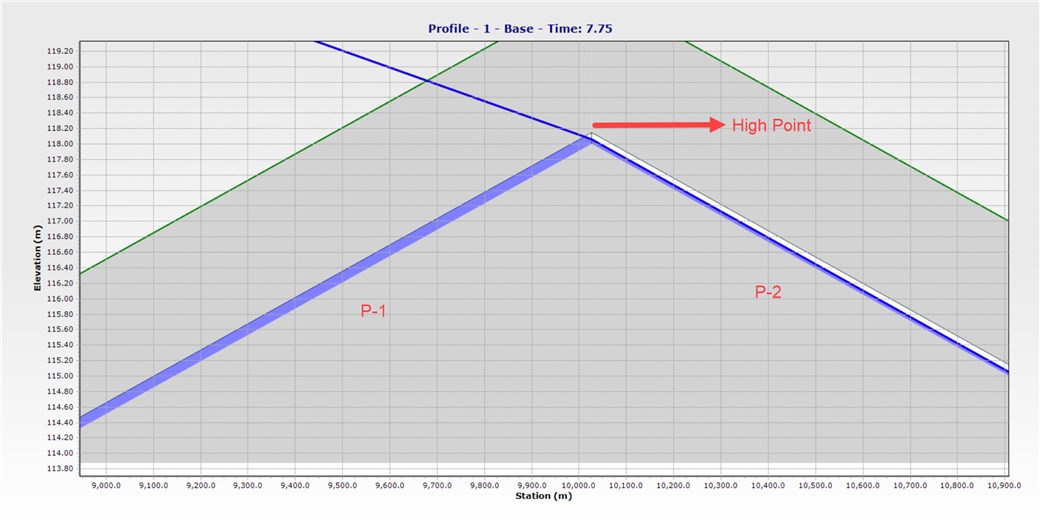| Product(s): |
SewerGEMS, CivilStorm |
| Version(s): |
CONNECT Edition, V8i |
| Area: |
Modeling |
Problem
An unexpected decrease in flow is seen between two pressure pipes in series.
OR
Flow is attenuated in a pipe downstream of a high point in a pressure pipe network.
Solution
This behavior of flow reduction is found while using the EPA-SWMM Solver (Explicit Solver) or the Implicit Solver.
A typical scenario would be a high point occurring in a system resulting in full flow transitioning to part-full flow in the downstream link.

In the above scenario you can see that there is a high point in the system between pressure pipes P-1 and P-2. In this scenario the pump upstream of the high point adds enough head to ensure pressurized flow in pipe P-1 but, due to the downward slope of pressure pipe P-2 the hydraulics dictate that the flow should be part-full. Also since pipe P-2 has a steep downward (positive) slope, the carrying capacity is also increased.
Basically, due to the steep downward slope and increased carrying capacity, the velocity is high and the depth of flow is reduced resulting in part-full flow in the downstream link. This does not mean that the flow quantity is reduced. The volume for both the flows remains the same, but is attenuated in the downstream, part-full pipe, hence the flow observed at a given time will appear to decrease. This is best seen when graphing flow over time in the two pipes in question:

With the dynamic solvers (Implicit and Explicit) this behavior happens automatically as they are equipped to model pressure pipes for both full and part-full flow. In the GVF-Convex (SewerCAD) there is a need to add an Air Valve to help the pump understand that it needs to add enough head to overcome the high point. See the link further below in the “See Also” Section for more details on how this works with the GVF-Convex (SewerCAD) solver.
To view this flow transition from full to part-full, ensure that the calculation and reporting time-step (output increment) is set small enough to capture the attenuation effects of these often short-lived flow pulses. Otherwise, the graph of flow in the upstream vs. downstream pipes in an Extended Period Simulation (EPS) may be misleading if the detail is not accurately displayed.
Here is a small video demonstration of transitioning of flow from full to part-full;
See Also
Modeling Force Mains with Air Valves in SewerCAD (GVF Convex Solver)
Flow Attenuation - Why does flow or velocity sometimes decrease when moving downstream? - (StormCAD)
Troubleshooting unstable SewerGEMS and CivilStorm model results using the Explicit SWMM Solver
Conduit flow increases as you move downstream, with no additional inflow